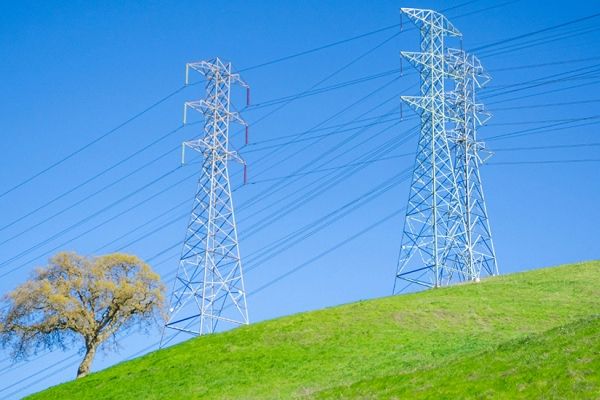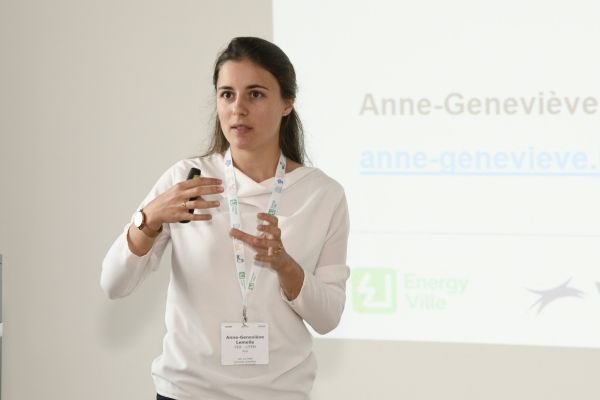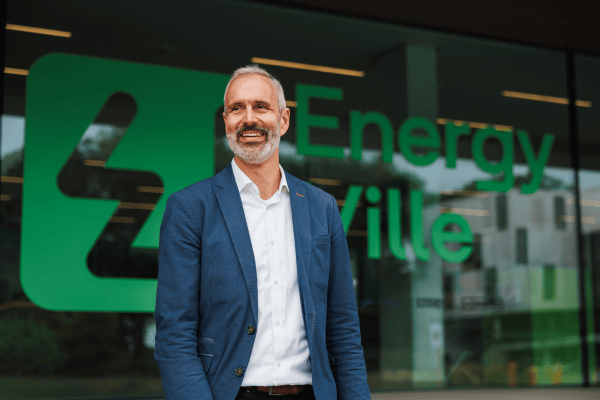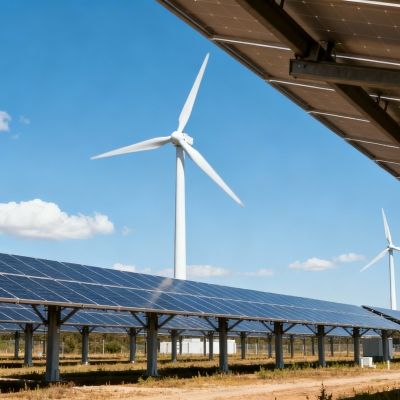Accelerating the decarbonisation of residential heating
Decarbonising residential heating is no longer a distant goal — it is an urgent necessity. As Flanders works toward a low‐carbon future, recent research by VITO/EnergyVille for Luminus offers a fresh look at how an adjustment to our Energy Performance Certificate (EPC) framework can accelerate the adoption of low‐carbon heating solutions. By integrating explicit carbon emission thresholds into the EPC methodology, the study reveals that heat pump uptake can not only be stimulated, but renovation investments can also become more accessible.

Rethinking what makes a home climate-friendly
In Flanders, the conversation around housing is changing. It’s no longer just about how well a home is built — it’s about how it performs for the climate. While energy efficiency has long been a policy focus, new research by VITO/EnergyVille for Luminus shows that reducing carbon emissions should now take center stage.
What if the true value of a home included its environmental footprint? By integrating carbon thresholds into the Flemish Energy Performance Certificate (EPC) framework, we can accelerate the shift toward cleaner heating systems like heat pumps — without sacrificing affordability or comfort.
This study explores how adjustments to the EPC framework can not only reduce emissions, but also lower barriers to renovation and make heat pumps more accessible to Flemish homeowners.
Representing the Flemish building stock
By examining 135 archetypes that encompass a variety of building types and construction periods, this study applies its findings to real-world districts in Flanders. This approach enables a detailed analysis of how policy enhancements could not only improve energy efficiency but also substantially reduce carbon emissions in the Flemish building sector.
The analysis is grounded in archetypes developed in 2022 [Position Paper De snelste weg naar A - DUTCH ONLY] and derived from Flemish EPC data. The results are then further explored for three selected districts: Brugse Poort (Ghent), Boxbergerheide (Genk), and Berendrecht (Antwerp). The study uses VITO/EnergyVille’s Building Energy Calculation Service (EBECS) and Urban Energy Pathfinder (UEP) tools to simulate various renovation scenarios.
Not all A-labels are the same
The key results of the study are as follows:
- Some buildings can achieve an A-label based on energy efficiency but still rely on fossil fuels, which keeps their carbon footprint high.
- When carbon constraints do get taken into account, with carbon limits of 6 kg/m² and 8kg/m², heat pumps become the dominant heating technology—a shift that dramatically reduces emissions compared to conventional gas boilers. (Figure 1)
- Phased renovation strategies—where homeowners first install a heat pump and later enhance insulation—emerge as a cost-effective pathway to long-term decarbonisation.

Figure 1: Yearly carbon emissions per m² of the archetypes for three A-label scenarios: A full gas boiler scenario (left), a Total Cost of Ownership (TCO)-optimised scenario (middle) and a full heat pump scenario (right)
Carbon constraints as an electrification stimulus
These insights point to an important message: by simply rebalancing the EPC’s focus—from primary energy consumption alone to also account for CO₂ emissions directly—policymakers can drive a faster transition to sustainable heating. (Figure 2)

Figure 2: Optimal choice of heating system for EPC A and B-labels with carbon constraints of 6kg/m² and 8kg/m²
Smart data, smarter renovations
In the study, VITO/EnergyVille applies a range of specialised tools and datasets—the key tool being VITO/EnergyVille’s Urban Energy Pathfinder (UEP), a powerful data-driven model designed to simulate and assess energy performance in buildings across selected districts. By integrating open data with local factors and specific project details, the UEP tool generates probabilistic models that provide a comprehensive view of energy use, efficiency, and potential improvements at both the building and district levels.
Several key insights emerged from this study:
- Lower upfront costs: The research shows that incorporating carbon limits not only improves environmental outcomes but can also lower upfront investment barriers. For example, scenarios with carbon constraints enable more buildings to stay within the limits of the Flemish “My Renovation Loan”, thus easing the cost burden on homeowners.
- The power of electrification: Comparative simulations reveal that when the electricity-to-gas price ratio shifts to more favourable benchmarks (closer to the ratio of 2.2 in France or the ratio of 1.5 in the Netherlands), the total cost of ownership (TCO) for heat pump systems drops significantly, which in turn supports higher implementation. This finding underscores the dual benefit of regulatory adjustments combined with price shifts.
- The importance of localised renovation strategies: The analysis demonstrates that districts are unique, and tailored strategies can further optimise the benefits of electrification. A successful renovation strategy thus needs to carefully consider the socio-economical and demographical variances, as well as the unique building typology of each district.
Policy recommendations
Overall, achieving significant decarbonisation in residential heating asks for a combination of policy support, financial incentives to lower upfront costs, and strategic renovation approaches that prioritise electrification. For Flemish homeowners and policymakers alike, the study offers a set of clear recommendations:
- Revise the EPC framework: integrate carbon emission thresholds to better reflect a building’s environmental impact
- Adjust energy taxation: work towards harmonising the electricity-to-gas price ratio, thereby improving the business case for heat pumps
- Support phased renovations: encourage strategies that lower upfront costs while still achieving high carbon abatement
Together, these measures could not only propel us closer to our 2050 climate goals but also ensure that the transition is economically feasible for all.
Conclusion: a comprehensive policy package to prioritise electrification
By integrating carbon constraints into the EPC framework and shifting the focus from energy efficiency alone to also consider carbon emissions, policymakers can accelerate the adoption of low-carbon technologies while minimising financial barriers.
This strategy could be particularly effective when combined with a policy-driven shift in the electricity-to-gas price ratio. So, achieving climate goals requires a package of policy instruments to prioritise electrification.
Curious to discover more?
Read the full report of the study ‘Accelerating the Decarbonisation of Residential Heating’ by our VITO/EnergyVille colleague Nele Renders and Jonas Mariën.












